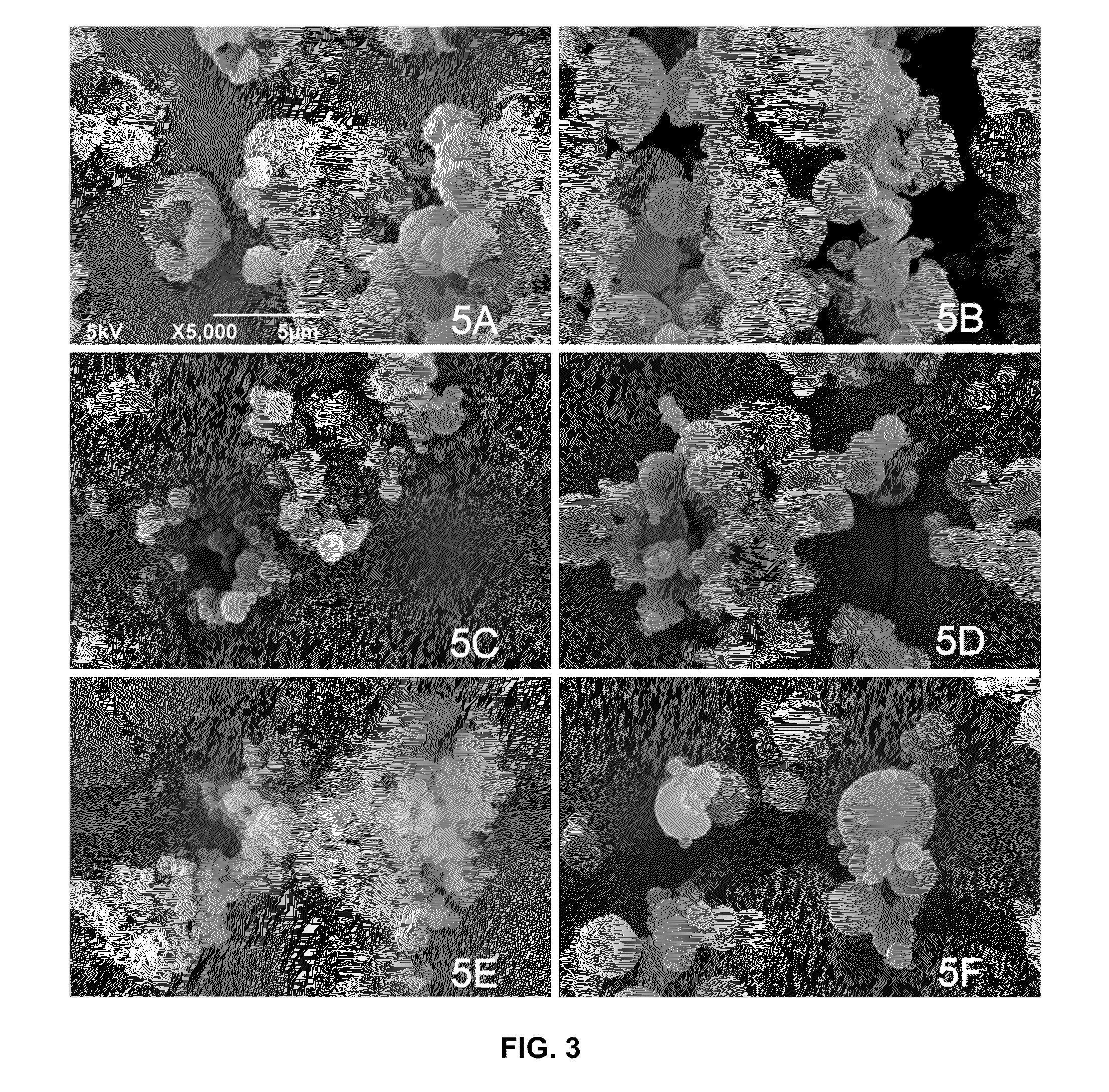Compositions for pulmonary delivery of long-acting β2 adrenergic receptor agonists and associated methods and systems
a technology of adrenergic receptor and adrenergic receptor, which is applied in the direction of drug composition, aerosol delivery, immunological disorders, etc., can solve the problems of mechanical failure, negative environmental impact of traditional cfc propellant, and difficulty in delivering active agents
- Summary
- Abstract
- Description
- Claims
- Application Information
AI Technical Summary
Benefits of technology
Problems solved by technology
Method used
Image
Examples
example 1
[0140]Active agent particles formed of glycopyrrolate (Pyrrolidinium, 3-((cyclopentylhydroxyphenylacetyl)oxy)-1,1-dimethyl-, bromide) were formed by micronizing glycopyrrolate using a jet mill. The particle size distribution of the micronized glycopyrrolate (GP) was determined by laser diffraction. 50% by volume of the micronized particles exhibited an optical diameter smaller than 2.1 μm, 90% by volume were smaller than 5 μm.
[0141]Suspending particles were manufactured as follows: 500 mL of a fluorocarbon-in water emulsion of PFOB (perfluoroctyl bromide) stabilized by a phospholipid was prepared. 18.7 g of the phospholipid, DSPC (1,2-Distearoyl-sn-Glycero-3-Phosphocholine), and 1.3 g of calcium chloride were homogenized in 400 mL of hot water (75° C.) using a high shear mixer. 100 mL of PFOB were added slowly during homogenization. The resulting coarse emulsion was then further homogenized using a high pressure homogenizer (Model C3, Avestin, Ottawa, Calif.) at pressures of up to 1...
example 2
[0149]Glycopyrrolate (GP) particles were formed by micronization using a jet mill. Suspending particles were manufactured as described in Example 1. The particle size distribution of the micronized GP was determined by laser diffraction. 50% by volume of the micronized particles exhibited an optical diameter smaller than 1.7 μm, 90% by volume exhibited an optical diameter smaller than 4.1 μm. Five different lots of metered dose inhalers were different lots were made. For configurations 2A, 2B and 2C the total concentration of DSPC, CaCl2, and GP in the feedstock was 40 mg / mL, for configuration 2D and 2E this concentration was doubled.
[0150]Metered dose inhalers were prepared by weighing the target masses of GP particles and suspending particles into canisters as described in Example 1. No further excipients were used. The target masses were 4 mg / canister for GP particles and 60 mg / canister for the suspending particles, resulting in a suspending particle to GP particle ratio of 15 fo...
example 3
[0156]Several similar batches of suspending particles were made as described in Example 1. The suspending particles were combined with glycopyrrolate (GP) particles that were micronized to different extents, using two different types of jet mills with various milling parameters. The optical diameter and particle size distribution of the micronized GP particles was determined by laser diffraction. Table 3 lists the d50 and d90 values for the different lots of micronized material used. d50 and d90 denote the particle size at which the cumulative volume distribution reported by the particle sizing instrument reaches 50% and 90% respectively.
[0157]Twelve different lots of metered dose inhalers were prepared as described in Example 1. In all cases the suspension concentration of GP particles in HFA 134a was in the range of 0.32-0.45 mg / mL and the suspension concentration of the suspending particles was in the range of 5.8-6.1 mg / mL. The configurations were deemed similar enough to pool t...
PUM
| Property | Measurement | Unit |
|---|---|---|
| concentration | aaaaa | aaaaa |
| concentration | aaaaa | aaaaa |
| concentration | aaaaa | aaaaa |
Abstract
Description
Claims
Application Information
 Login to View More
Login to View More - R&D
- Intellectual Property
- Life Sciences
- Materials
- Tech Scout
- Unparalleled Data Quality
- Higher Quality Content
- 60% Fewer Hallucinations
Browse by: Latest US Patents, China's latest patents, Technical Efficacy Thesaurus, Application Domain, Technology Topic, Popular Technical Reports.
© 2025 PatSnap. All rights reserved.Legal|Privacy policy|Modern Slavery Act Transparency Statement|Sitemap|About US| Contact US: help@patsnap.com



